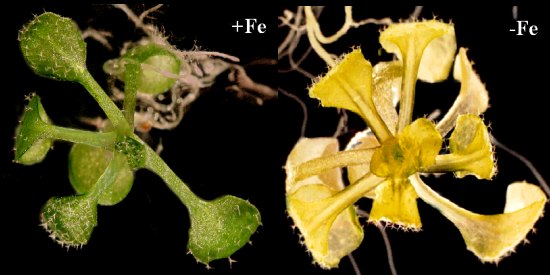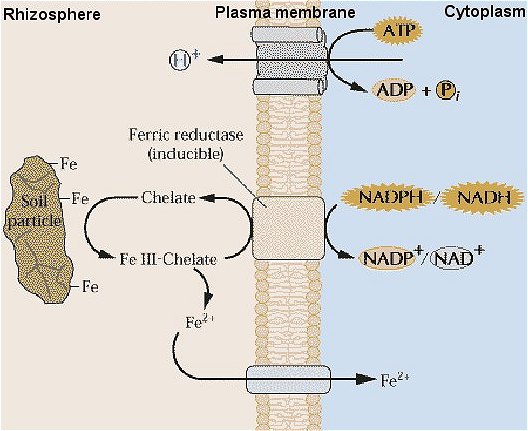
Model of Fe uptake by
dicots and nongrass monocots
Buchanan, Gruissem &
Jones (2000) Biochemistry & Molecular Biology of Plants
In roots of Fe-deficient
plants, enhanced activity of proton transporting ATPases in the plasma
membrane helps to increase the solubility of Fe hydroxide species and provides
a slightly acidic pH in the apoplast that restricts the electrostatic repulsion
of negatively charged Fe(III) chelates. In addition, the action of the
H+-ATPase ensures an optimal pH for the activity of a plasma membrane-bound
Fe(III) chelate reductase (FRO2) which transfers electrons from intracellular
pyridine nucleotides to extracellular Fe(III). Fe(III) chelate reductase
activity is co-regulated with an iron-regulated transporter (IRT1) displaying
increased expression under iron-limited conditions.
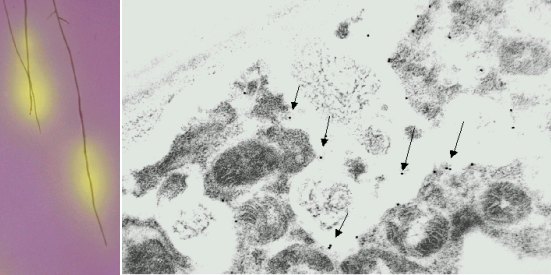
Immunocytolocalization
of P-type H+-ATPase in rhizodermal cells of tomato roots
Further responses to Fe starvation
are concerned with alterations in root morphology and root architecture,
often leading to an increase in the absorptive surface area. Depending
on the species, such an increase can be achieved by the formation of extra
root hairs, development of clusters of secondary lateral roots (proteoid
roots), or the formation of transfer cells in the rhizodermis.
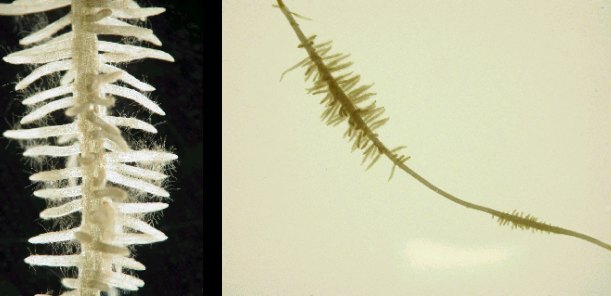
Fe stress-induced cluster
roots of Lupinus albus
We are taking a combined
physiological, molecular, and structural approach toward understanding
the control of the adaptive responses to iron deficiency stress. This approach
involves the physiological characterization and determination of enzymes
involved in iron uptake at the protein and mRNA level, elucidation of short
and long distance signaling pathways, analysis of iron-induced changes
in root morphology, and introduction of iron-responsive genes in plants.
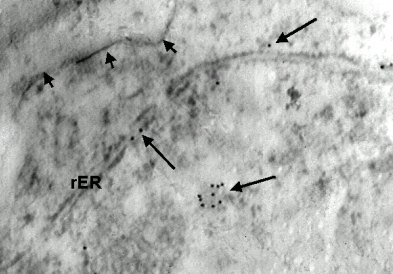
‘On grid’ in situ hybridization
of LeIRT1 in epidermal cells of tomato roots
tacatcgcca ttttcctcct tctcatctca
attttggccc ctcgagtact atcagtagta gaagattgtg gagcagaagaagacaactca tgtgtcaata
Special emphasis is given
on the induction and function of transfer cells, parenchymatous cells with
conspicuous ingrowths of secondary wall material that protrude into the
cell lumina and increase the area to volume ratio. Similar to root hairs,
transfer cells can be induced by auxin and ethylene, but in contrast to
the development of root hairs the formation of transfer cells is not dependent
on the ethylene and auxin signalling cascades. Thus, their formation appears
to be controlled by a separate pathway.
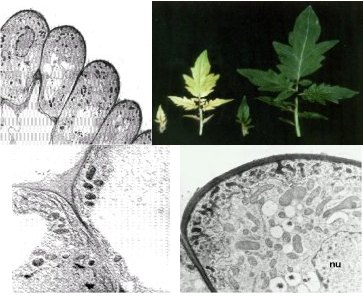
Formation of rhizodermal
transfer cells in Fe-deficient Lycopersicon esculentum roots
Co-operations
Prof.
T. Buckhout
Dr.
F. Dunemann |
